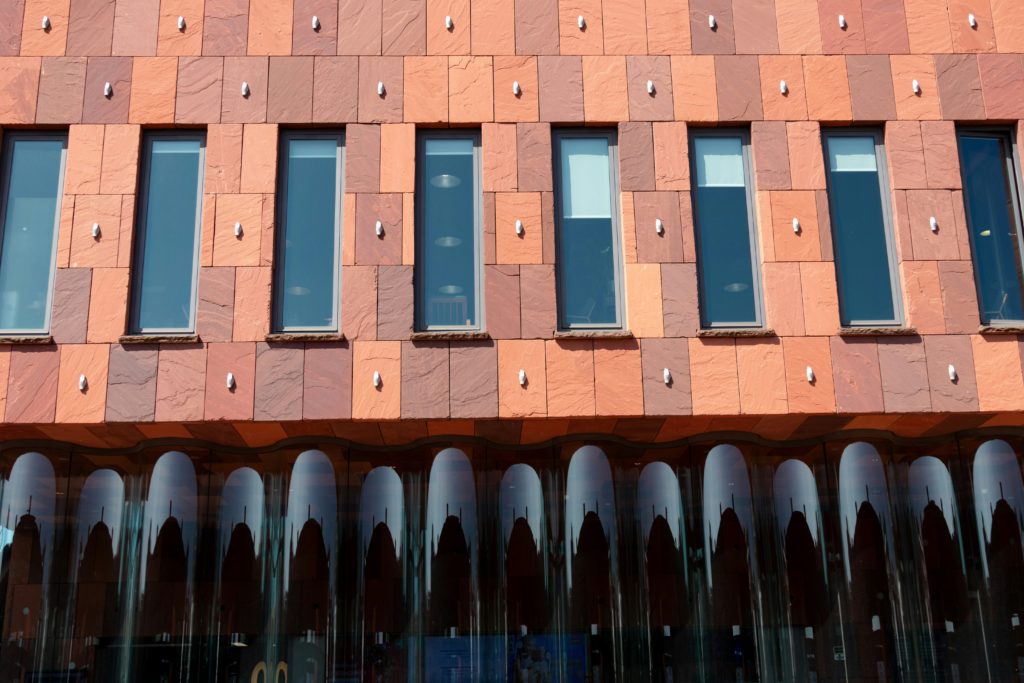Commercial Feature
How UV-Resistant Plastic Supports Sustainable Construction

Sustainable construction isn’t just a trend; it has become a practical approach to building structures that last longer, use materials more efficiently, and demand fewer resources over their lifetime. One material that keeps gaining attention is UV-resistant plastic. Although often overlooked in favor of traditional building supplies, this type of plastic offers surprising advantages for architects, contractors, and facility managers who want structures to withstand harsh outdoor conditions while reducing long-term environmental impact.
Why UV Resistance Matters More Than Many Expect
Anyone who has watched outdoor materials fade, crack, or weaken over time understands the influence of ultraviolet radiation. Sun exposure can degrade many common plastics, leading to discoloration, brittleness, and structural failure. For buildings, this means higher maintenance needs, premature replacements, and, ultimately, more waste.
UV-resistant plastic is designed to slow or prevent this breakdown. It incorporates additives or surface coatings that help the material remain stable even when exposed to strong sunlight for years. Because it lasts longer than standard plastic, it reduces how often components need to be replaced. Fewer replacements translate into less material consumption and fewer disposal requirements, supporting more sustainable practices.
For example, contractors purchasing a UV-resistant plastic sheet can install exterior glazing, roofing elements, or protective cladding without worrying that the material will deteriorate prematurely.
Durability That Aligns With Eco-Friendly Objectives
Extended material life is one of the simplest and most effective ways to lower a building’s environmental footprint. UV-resistant plastic maintains clarity, strength, and impact resistance over time, which helps reduce both waste and resource use.
Consider areas with intense sunlight: rooftop walkways, skylights, and exterior wall systems. These components are constantly exposed to UV rays, temperature changes, and wind. A standard plastic panel might start to weaken after only a few seasons. UV-resistant options, however, stay functional for far longer, reducing the need for repairs or replacements.
In addition, many UV-resistant plastics are fully recyclable. When they do eventually reach the end of their life cycle, they can often be repurposed into new products rather than ending up in landfills. This circular approach makes them a strong candidate for projects aiming for high environmental standards or certification.
Improving Energy Efficiency Without Extra Complexity
Natural light plays a key role in efficient building design. By allowing sunlight indoors, a structure can reduce its dependence on artificial lighting, cutting electricity usage during daytime hours. UV-resistant plastic contributes to this goal by offering excellent light transmission while filtering out harmful radiation.
Skylights, canopy systems, and translucent façades made from UV-resistant materials brighten interior spaces without compromising on occupant comfort or energy performance. Because the plastic remains clear over time, building owners don’t have to worry about yellowing or loss of transparency that would reduce lighting quality and efficiency.
Some variants are even engineered to improve insulation or block heat, helping maintain steady indoor temperatures. This reduces strain on heating and cooling systems, lowering energy consumption across the building’s lifetime.
Lightweight Materials Reduce Transportation and Installation Impact
Heavy construction materials require more fuel for transport and more equipment and labor for installation. UV-resistant plastics are typically much lighter than glass or metal. This characteristic makes them attractive for projects aiming to minimize environmental impact throughout the supply chain.
Fewer transportation emissions, simpler handling, and shorter installation times all contribute to a more resource-efficient construction process. Lightweight materials can also reduce the structural load on the building itself, allowing engineers to design with fewer reinforcing elements. That means less raw material used overall.
Safety and Performance Benefits That Stand the Test of Time
Beyond sustainability, UV-resistant plastics also provide meaningful performance advantages that support occupant safety and building efficiency.
Many versions offer high impact resistance, making them ideal for storm-prone regions where debris can damage standard materials. They can also be molded or thermoformed into custom shapes, giving architects flexibility when designing protective features, shading systems, or decorative elements.
The ability to maintain stability under UV exposure ensures that safety-related installations, such as protective barriers, signage covers, or outdoor equipment housings, don’t degrade in a way that puts people at risk.
Supporting Sustainable Construction Goals With Practical Solutions
Building responsibly often comes down to choosing materials that last, perform reliably, and minimize the use of resources. UV-resistant plastic checks all those boxes. Its extended lifespan reduces waste. Its transparency and insulating properties help improve lighting and energy efficiency. Its lightweight nature cuts transportation impact and eases installation. And its durability ensures that structures remain dependable even in demanding outdoor settings.
Architects and builders looking for ways to support long-term sustainability can use UV-resistant plastic as part of a broader strategy that includes energy-efficient design, recyclable materials, and thoughtful lifecycle planning. It doesn’t require changing the entire construction process; instead, it offers an accessible way to strengthen a building’s resilience while reducing its environmental costs.
By integrating UV-resistant plastic into exterior glazing, roofing, protective barriers, and other sun-exposed components, construction professionals can create buildings that remain functional and visually appealing for years: while also supporting smarter resource use.
 News / Sidney May Ball cancelled6 November 2025
News / Sidney May Ball cancelled6 November 2025 News / Cambridge tops UK rankings for graduate employability9 November 2025
News / Cambridge tops UK rankings for graduate employability9 November 2025 News / Students launch women’s society excluding trans women31 October 2025
News / Students launch women’s society excluding trans women31 October 2025 News / College rowing captains narrowly vote to exclude trans women31 October 2025
News / College rowing captains narrowly vote to exclude trans women31 October 2025 News / News in Brief: scans, strikes, and South station setbacks9 November 2025
News / News in Brief: scans, strikes, and South station setbacks9 November 2025



